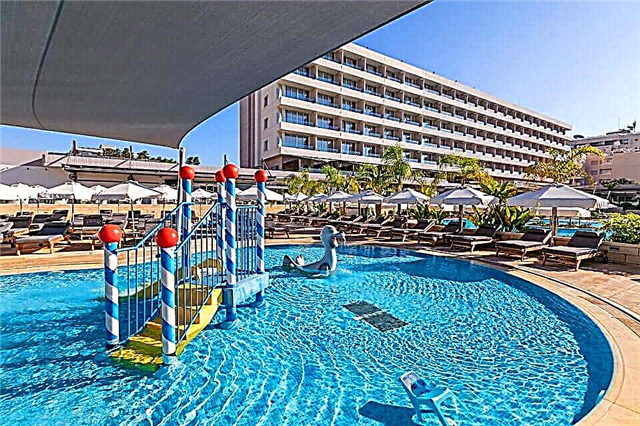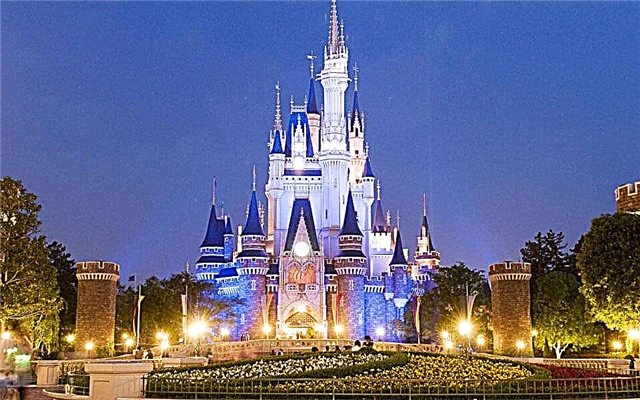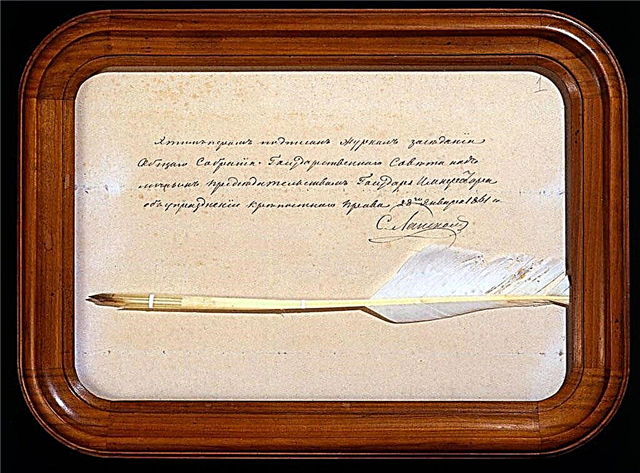The State Historical Museum is the brightest diamond among the keepers of the cultural and historical heritage of Russia. Located in the heart of the capital, it inevitably attracts the attention of tourists with its unusual appearance - most of all, the building resembles an Old Slavic tower. Every day, tens of thousands of people visit the museum's expositions, and it will take more than twenty days to view less than a fifth of the exhibits at least fleetingly. To appreciate Russian art and not visit a historical museum is the greatest crime.
History of creation

On the site of a modern object, the building of the Zemsky Prikaz was once located. The historically valuable building was demolished, having previously stipulated that the new building must be maintained in accordance with the traditions of the 17th century and correlated with the architectural ensemble of Red Square. The initial project was prepared by Vladimir Sherwood and Alexey Semyonov, but the final touches were made by Alexander Popov. In total, construction took more than seven years, and the grand opening took place in 1883.
During the Soviet period, the exposition policy of the museum took a sharp course towards the propaganda of communism. The façade of the building was simplified by removing the images of eagles and lions, the interior was “cleaned up” by destroying murals and details reminiscent of the royal power. The museum was even going to be demolished, building a communist monument in its place, but, fortunately, the project was never approved. Having lived up to the collapse of the USSR, in 1991 the object was recognized as particularly valuable in terms of cultural heritage.
The administration of the museum was transferred to the neighboring building, which once belonged to the capital's duma, the halls and the facade were decided to be restored in accordance with the original plan of the architects. The work was completed in 1997, and 10 years later the object was recognized as a "symbol of science." At the moment, there are approximately 4.5 million exhibits on its territory.
Hall interiors

The interior of the museum is a unique combination of history and modern technology. The restoration of the nineties returned the halls to their original appearance: the walls and ceilings are hand-painted, some of the floors are covered with mosaics, and the original Russian motifs can be clearly traced in the tapestry embroidery. The color palette, for the most part, is represented by two colors: red, or burgundy, and gold.

Having restored the unique design, the administration did not forget about the technological improvement. The expositions are equipped with monitors with touchscreens, which allows you to gain additional knowledge about the items on display. For example, if there are books or manuscripts under glass, they can be read and flipped on the screen. Additional information desks have been installed throughout the building, an audio guide system has been introduced, toilet rooms have been reinstalled and are now accessible to persons with disabilities.
Exhibits

The three-storey building contains over four million historical values. Having arranged an excursion from the second floor to the third, you can plunge headlong into the past, observing the formation of the Russian state since the time of primitive society. The permanent exhibition is represented by ancient scrolls, books, precious metals, photographs, drawings, household items, rooms completely decorated in accordance with a certain historical era, and much more. Visitors are given a rare chance to see many unique items such as:
The royal state seal is the only item whose print could confirm the authenticity of the document. The first mention of seals dates back to the tenth century, when an agreement was concluded between Russia and the Byzantine state. The collection of the museum features a seal of Peter with the image of a two-headed eagle.
Blau's Globe is a unique cartographic object brought to Russia at the insistence of the famous Western lover Peter I. It was originally used to study the map of the world, and then was placed in the Kunstkamera.
Saber of Napoleon - the weapon of the great French emperor came to Russia with the help of Count Shuvalov, who accompanied the Frenchman to the island of Elba. In the civil war, it was even used in battle, but was later transported to the museum.
The Order of St. George A. V. Suvorov is a remarkable award presented to the outstanding Russian commander by Tsarina Catherine II herself.
Pen of Alexander II - What could be surprising in such an ordinary subject? And the fact that it was with this pen that the emperor signed the journal of the meeting, at which the decision was made to abolish serfdom.

Birch bark letters are the first evidence of writing in Russia: official documents, household notes and even children's drawings are scrawled on fragments of tree bark.
Fan of Natalia Goncharova is a famous beauty and the wife of the great writer A.S. Pushkina was very jealous of her wardrobe, carefully choosing outfits and accessories. The fan presented by the museum is a delightful piece of fashionable art, crafted from the shell of a turtle and adorned with an exquisite tassel.
The collection of the museum is replenished and modernized from year to year. In particular, 2016 turned out to be rich in items of peasant life, such as chests and spinning wheels, as well as historically valuable documents of the early twentieth century.
Opening hours and ticket prices
October to May:
- Working hours: from 10:00 to 18:00
- Saturday and Friday - until 21.00
- Closed Tuesday.
June to September:
- Working hours: from 10:00 to 18:00
- Saturday and Friday - 21.00
- The first Tuesday of the month is the day of sanitization, the entrance is closed.
Visit cost:
- Adult citizens of the Russian Federation and foreign countries - 400 rubles.
- Students of Russian educational institutions - 150 rubles.
- Holders of ISIC, IYTC student cards - 150 rubles.
- Beneficiaries and pensioners of the Russian Federation and the CIS countries - 150 rubles.
- Family ticket (two parents + two children under 16) - 600 rubles.
Sales stop one hour before closing time.
Address: Moscow, Red Square, 1
Metro: Teatralnaya, Ploschad Revolyutsii or Okhotny Ryad stations (follow the corresponding signs).











